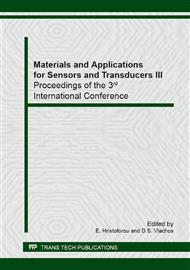p.181
p.185
p.189
p.194
p.198
p.202
p.207
p.211
p.215
Bond of High Strength Concrete with Recycled Coarse Aggregate and Reinforcing Bar
Abstract:
This study conducted a comparative evaluation of bond behavior according to the steel reinforcing type and substitution rate of recycled coarse aggregate. Mixed as high-strength concrete of design strength 50MPa in order to verify the applicability of recycled coarse aggregate concrete as a structural member. Total of 24 specimens were manufactured with variables of recycled aggregate substitution rate (0%, 30%, 50%, 100%), steel reinforcing arrangement direction (vertical, horizontal top·bottom) and steel reinforcing types (SD400 D16, D19). The specimen was produced according to CSA S802-02 and ASTM 234. specimens using D16 reinforcing, the vertical reinforcing showed similar bond stress regardless of the recycled aggregate substitution rate and slip amount, and for the horizontal reinforcing, the bottom specimen showed similar bond stress as the vertical reinforcing and slip amount. The top specimen showed slightly less bonds tress than vertical and horizontal bottom specimens. This is thought to have been caused by the subsidence of the aggregate. The specimen using D19 reinforcing showed similar bond stress in vertical · horizontal top · bottom, horizontal top reinforcing maximum bond stress, horizontal bottom reinforcing maximum bond stress and showed no difference due to aggregate subsidence like in D16. As the result, Bond stress in this study is larger than 2.0fck, the value proposed by CEB-FIP code. The specimen using D16 reinforcing bar showed 4.5fck and the specimen using D19 reinforcing bar was near 3.9fck. Therefore, since the standard value is satisfied regardless of replacement rate of recycled aggregate, natural aggregate in high strength concrete can be substituted by recycled aggregate.
Info:
Periodical:
Pages:
198-201
Citation:
Online since:
April 2014
Authors:
Price:
Сopyright:
© 2014 Trans Tech Publications Ltd. All Rights Reserved
Share:
Citation:


